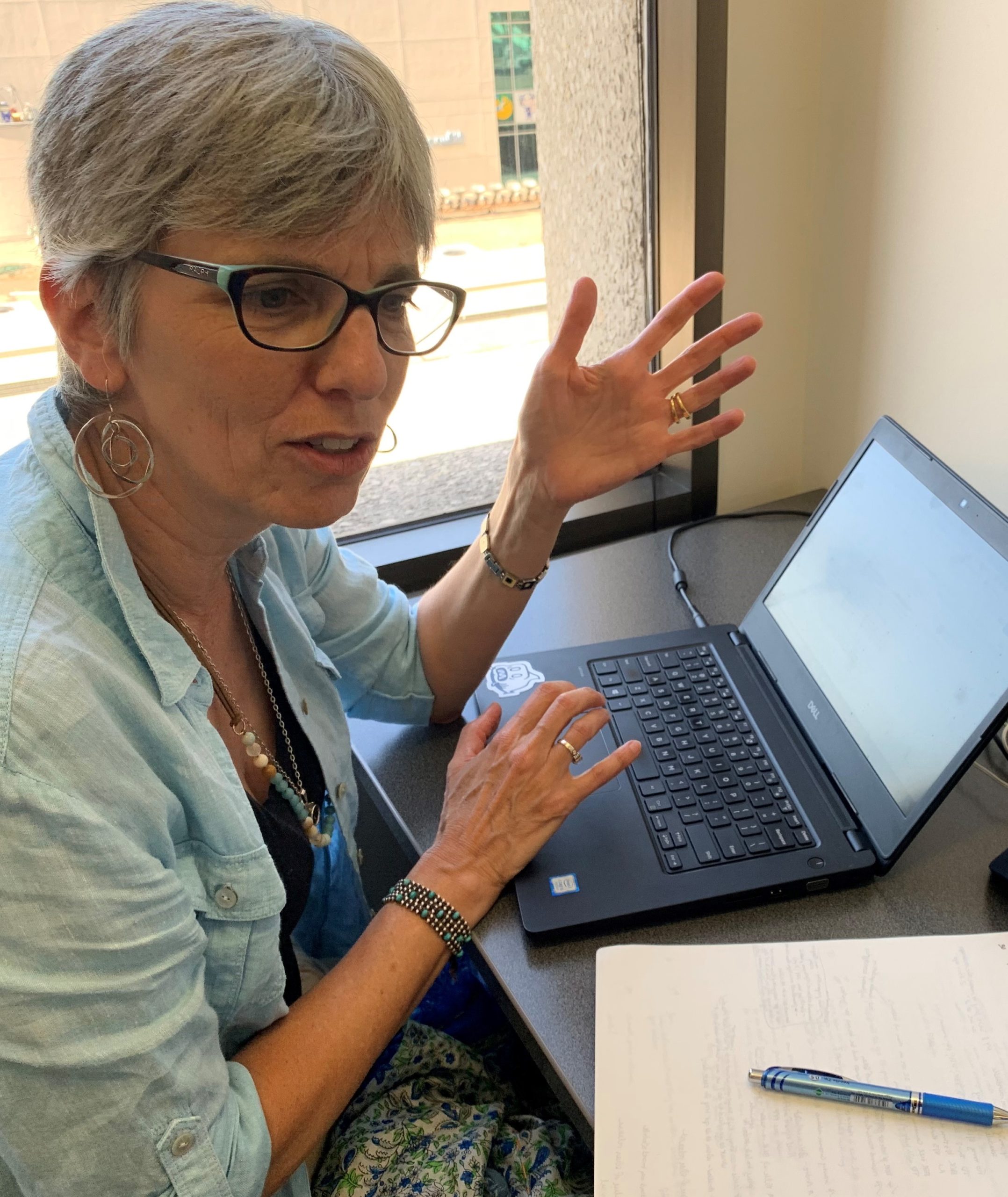 Susan Rakov: Getting Ready for the High Holy Days at Home
Susan Rakov: Getting Ready for the High Holy Days at Home
One year, I was sick in bed during Yom Kippur. I didn’t try to watch a whole day of services on my computer, but I did tune in for the livestream of Kol Nidre. I could see the bimah, the rabbis and the cantor, and an ocean of Jews — just one of all the oceans of Jews converging around the world in that moment.
I wasn’t in the room, but the space was being held for me. It wasn’t normal, but it was enough.
For many Reform Jews, including me, the High Holy Days are cloaked in “shoulds”: I should prepare. I should study in advance. I should make amends. I should make plans with other people for a break-fast. Lots of shoulds, many of which have gotten subsumed these last twenty years by the needs of a family rooted in an interfaith marriage that, while resolutely Jewish, does not have a robust practice for the Days of Awe. So I always approach this time of year feeling a little bit not-up-to-the-challenge.
This year, the challenge is different.
The shoulds, like so much of our lives, have been stripped away. The only imperative is to locate myself in community, all of us trying to find our way … to Echad.
But my Jewish community is scattered across a small geographic area that might as well be thousands of miles. I’m as far from all of you as I am from my family of origin in Boston. This year, no ocean of Jews will be holding the space for me as I zoom in from home.
So what do I know that might help me in this situation we’re heading into?
I know that there’s something about entering the synagogue that shifts everything. Once when my soon-to-be husband and I were rafting with friends through the Grand Canyon, we developed a collective habit of yelling out “STATE CHANGE!” whenever we jumped off the boats into the water, out of the incredible heat into the deep blue cold. Each time, we emerged with our neurons subtly rearranged. Walking into the synagogue is not as physically exhilarating, but it too rearranges my brain and spirit.
I know that online worship is challenging, but there are things I can do to make it easier. I’ve found that standing up, singing, clapping, moving my body a little are all helpful. There are no rows of chairs or inhibitions to limit me, and I’ve taken advantage of that.
I know that I love wearing white at the temple during the Days of Awe.
So I’m thinking about those three elements of my Rosh Hashanah and Yom Kippur this year: space, practice, and adornment.
Space: I know I don’t want to celebrate the holidays at my desk, where I work all day every day. I need a place in my home that I can temporarily turn into a small sanctuary, dedicated to this encounter. I love the idea of praying outside in the yard, but I’m leery (somebody else’s lawnmower or barking dog might seem awfully loud to me). I’m thinking about a corner of my bedroom; I’m also considering the dining room, with a white tablecloth on the table. Wherever I set it up, I want to be able to face east, and I want the computer to be high enough that I’m not looking down at it. I want to lift my face up.
Practice: I need enough room to be able to stand, pace, sing, sway, dance. And enough privacy or chutzpah to be able to let the Spirit literally move me, if that’s what needs to happen.
Dress: I’m thinking I’ll wear white this year, for Rosh Hashanah and Yom Kippur. What if we all did? It could be a t-shirt, it could be a ballgown, but if we’re all in white, we’re all in it together.
I probably won’t stay in services for as long as I would if we were all together. I will need to go for a walk; I will need to play some music to round out these days. But if I spend the time in advance to prepare in a few small ways, if I do what’s required to hold the space myself and imagine all of you doing that with me, that will help.
It will not be normal. But I think it will be enough.
~~~~~
Susan Rakov is the director of Frontier Group, the research and policy development shop within The Public Interest Network (which includes advocacy groups CALPIRG and Environment California here in the Golden State). She is a native of Newton, Massachusetts; lives on the west side of Santa Barbara; has been a member of CBB since her 21-year-old daughter Emma was in the fourth grade; and really loves to sing, especially with her husband Vince Semonsen.